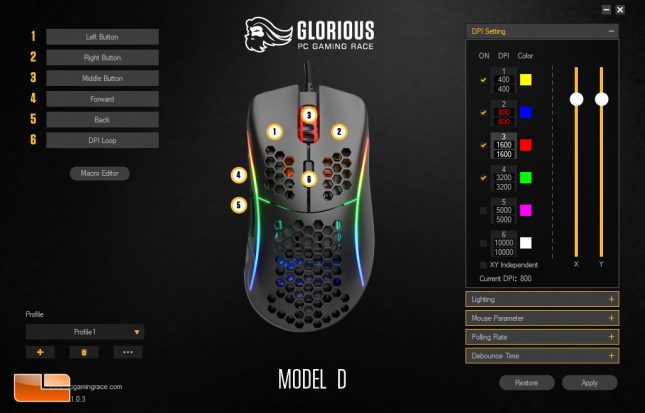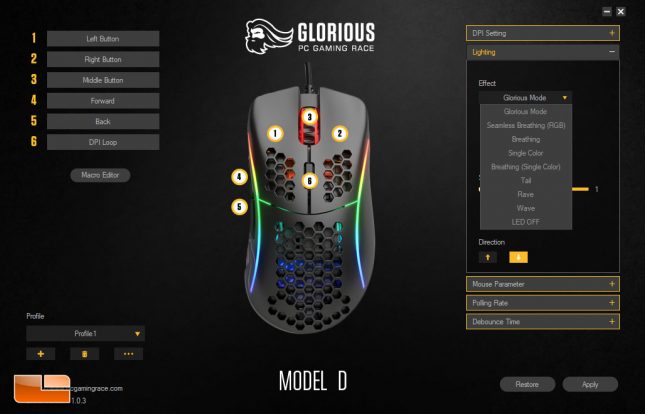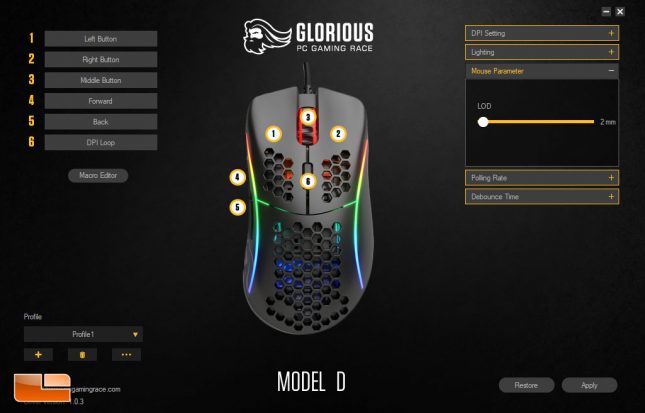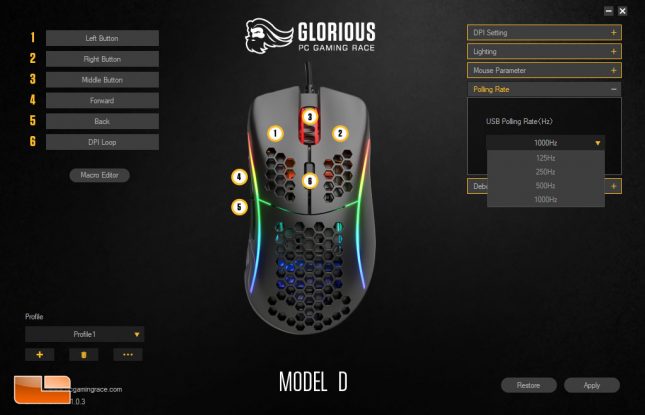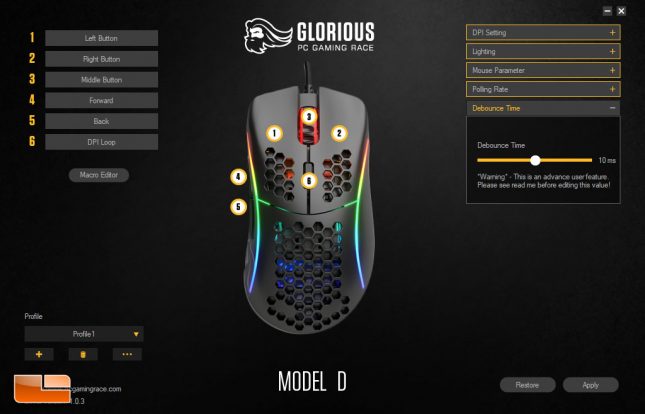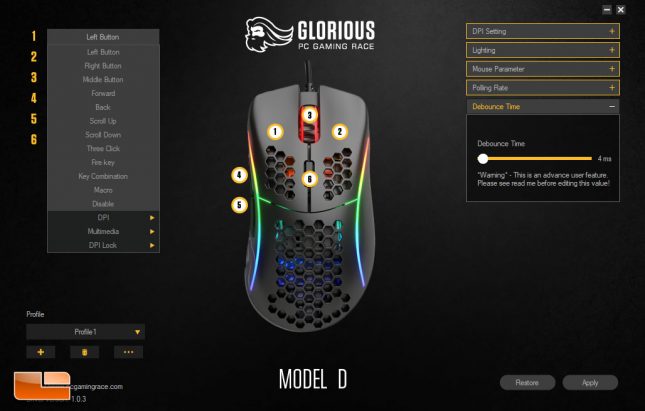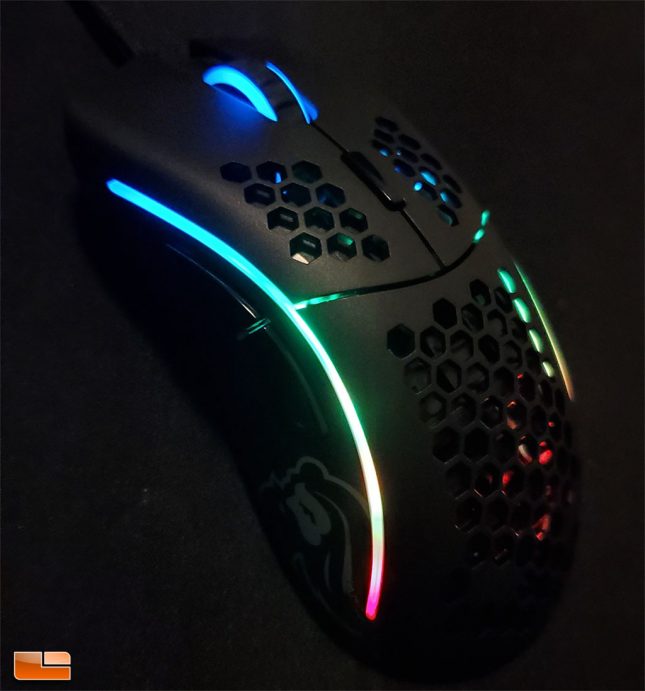Glorious Model D Lightweight Gaming Mouse Review
Glorious Model D Lightweight Gaming Mouse – Software
The Model D software is on version 1.03 and I downloaded it from the Glorious PC Master Race website, where it was very easy to find. The Model D software is simple and straightforward, with various adjustment options available from the main section.
The Model D is capable of having up to six different adjustable DPI settings, all of which can be adjusted within the software. The X and Y axis DPI are able to be adjusted independently. You can set the DPI indicator color for each setting so that a quick flip over of the mouse will tell you which DPI you’re at.
This is about the only thing that disappoints me with the Glorious Model D software suite. There simply aren’t enough RGB customization options available. Where are the color shift modes? Why can’t I individually address LED zones as I can on Corsair and Razer mice? The included effects have some duds (the rave mode and wave mode are just too busy and distracting) and some good ones. The default Glorious Mode is probably the smoothest effect of the bunch. I feel like Glorious could do some work to really open up their lighting and give users more customization. I won’t fault them because they are a new brand and software development isn’t easy.
In the Model D software you can adjust the lift off distance (how high you can pick up the mouse from the surface before the sensor stops tracking) to either 2mm or 3mm. This setting can come in handy for players who move their mouse around a lot and I generally find 2mm to be an optimal setting for my play style. I am not sure why Glorious called this section Mouse Parameter and since the only setting you can adjust here is lift off distance, why not just call it that?
Polling rate adjustment is available and though the slower polling rates than 1000Hz (1MS) don’t offer any performance or other tangible benefit, they may allow the Model D to be compatible with older systems. A slower polling rate may also help save some battery life on a wireless mouse, but that’s just not applicable here. Still, we’ll take any feature we can get.
Debounce time will help avoid double clicking of the mouse button, as it will add a delay between when the mouse button can be clicked in succession. A higher debounce time will add click latency and I experienced no issues with running at 4ms. While lower debounce times than 4ms are theoretically possible on the Model D, they aren’t necessary and the lower the debounce time, the more likely it is to run into issues with double clicking, so Glorious does not make them available.
You can reprogram the buttons on the Model D for added utility, a welcome feature that I’m sure many users will probably never use, but that’s certainly nice to have.
The inability to adjust the RGB lighting more extensively on the Model D was my only real gripe, as Glorious is including other important settings like debounce time, lift off distance and button remapping in a very straightforward, easy to use package. The Model D will save settings adjusted within the software to the onboard memory of the mouse, so you can adjust the settings as you wish and then take the mouse with you to another PC with the settings retained. Overall, the Glorious Model D software works really well and offers some nice options, so I think Glorious is on the right track.
Let’s go over how the Model D performs and I’ll give my overall thoughts on how the D stacks up on the next page.

